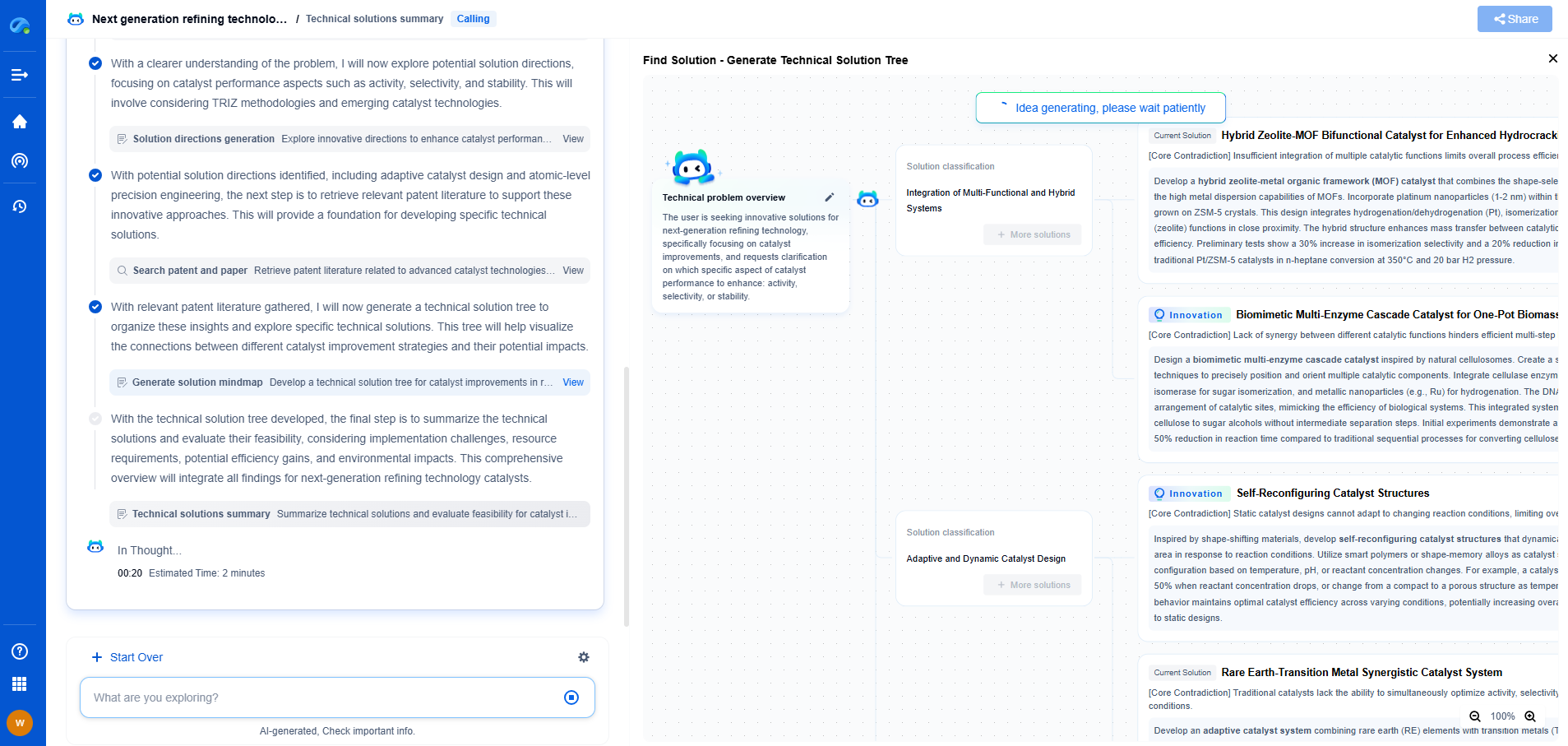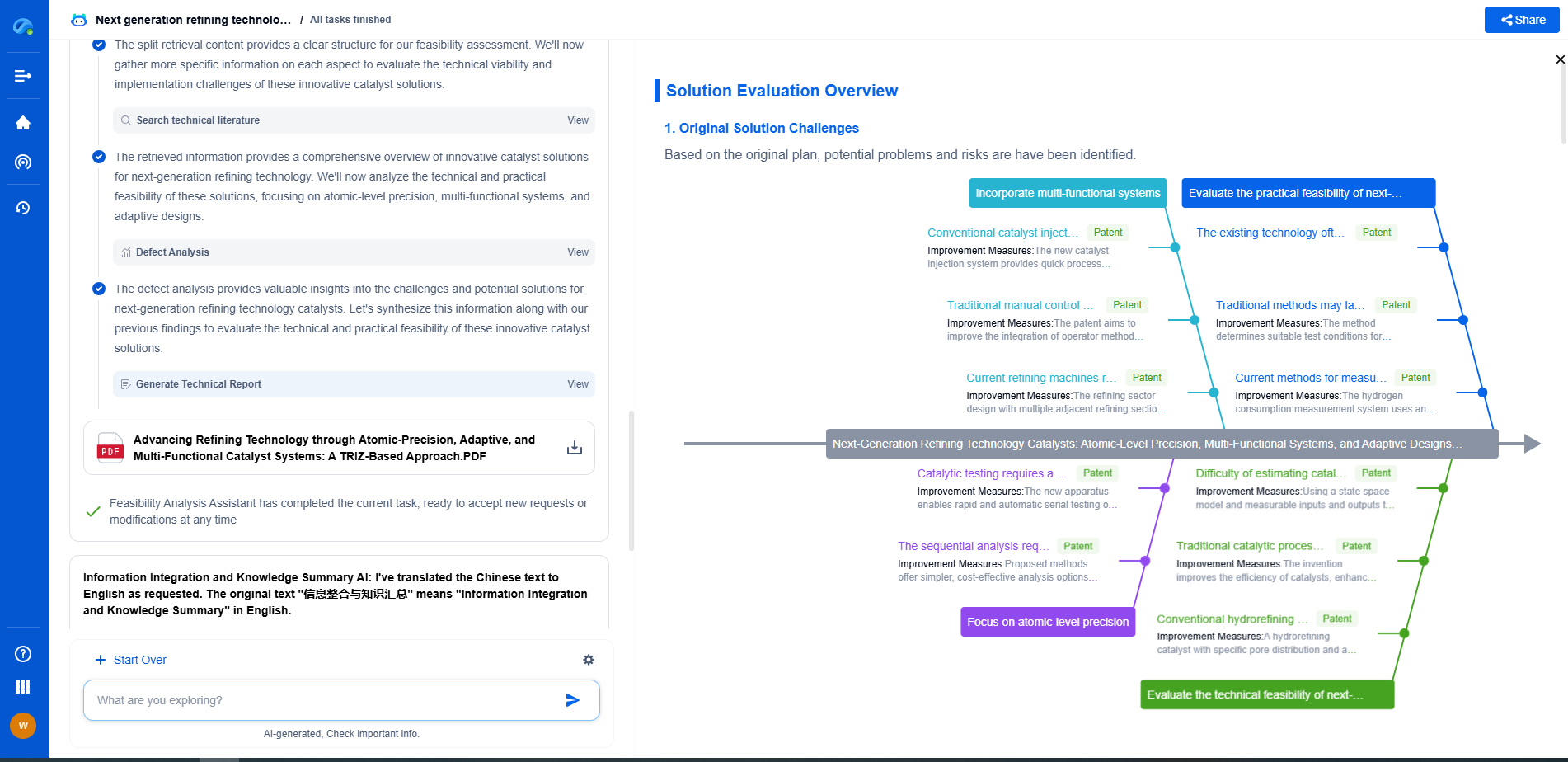How to Apply ANOVA in Machine Learning Model Testing
JUN 26, 2025 |
In the realm of machine learning, evaluating the performance of models is crucial. One of the statistical methods that serve this purpose is Analysis of Variance, commonly known as ANOVA. Primarily used for testing differences between two or more group means, ANOVA can help determine if any of the differences in model performance are statistically significant. This article will guide you through the process of applying ANOVA in the context of machine learning model testing.
Understanding ANOVA: A Brief Overview
Before diving into application, it's essential to grasp the basics of ANOVA. ANOVA is a statistical method used to analyze differences among group means in a sample. The fundamental principle behind ANOVA is to look at the variance within each group compared to the variance between the groups. If the variance between groups is significantly larger than the variance within groups, it suggests that at least one group mean is different from the others.
Why Use ANOVA in Machine Learning?
Machine learning experiments often require comparing multiple models or configurations to understand which one performs best. ANOVA provides a robust mechanism to test these differences statistically. By applying ANOVA, you can ensure that observed performance differences are not just due to random chance but statistically significant, making your conclusions more reliable.
Steps to Apply ANOVA in Machine Learning Model Testing
1. Preparing Data for ANOVA
Ensure your data is organized such that the model performance metrics are grouped by the models or configurations you are comparing. It's crucial to have sufficient data points for each group to ensure the statistical power of the ANOVA test.
2. Checking Assumptions
ANOVA requires several assumptions: independence of observations, normality, and homogeneity of variance (homoscedasticity). You can test for normality using methods like the Shapiro-Wilk test and check for homoscedasticity using Levene's test. If these assumptions are violated, consider using a non-parametric alternative like Kruskal-Wallis H-test.
3. Conducting ANOVA
Use statistical software or libraries such as Python’s SciPy or R to perform ANOVA. The output will include an F-statistic and a p-value. A significant p-value (typically < 0.05) indicates that there are significant differences among the group means.
4. Post-Hoc Testing
If ANOVA indicates significant differences, post-hoc tests like Tukey’s HSD (Honestly Significant Difference) are necessary to pinpoint exactly which groups differ. This step is crucial for understanding how different models or configurations compare to one another.
5. Interpreting Results
Carefully interpret the results in the context of your experiment. Ensure that any significant findings are not just statistically significant but also practically significant. Consider the effect size, which provides a measure of the magnitude of differences, complementing the p-value.
6. Reporting Findings
Communicate your findings clearly, highlighting which model or configuration performs best based on the ANOVA results. Include visualizations such as box plots to illustrate the differences in performance metrics across groups.
Challenges and Considerations
While ANOVA is powerful, it’s not without challenges. One common issue is dealing with violations of its assumptions. Transforming data or using robust alternatives can help mitigate this. Furthermore, be cautious of overfitting when using ANOVA results to select models – ensure that any performance gains generalize to unseen data.
Conclusion
ANOVA is a valuable tool in the toolkit of a machine learning practitioner, providing a statistical basis for comparing model performances. By following the steps outlined in this article, you can apply ANOVA effectively to draw meaningful insights from your machine learning experiments. Always remember to complement statistical significance with practical relevance to make informed decisions about your models.
Unleash the Full Potential of AI Innovation with Patsnap Eureka
The frontier of machine learning evolves faster than ever—from foundation models and neuromorphic computing to edge AI and self-supervised learning. Whether you're exploring novel architectures, optimizing inference at scale, or tracking patent landscapes in generative AI, staying ahead demands more than human bandwidth.
Patsnap Eureka, our intelligent AI assistant built for R&D professionals in high-tech sectors, empowers you with real-time expert-level analysis, technology roadmap exploration, and strategic mapping of core patents—all within a seamless, user-friendly interface.
👉 Try Patsnap Eureka today to accelerate your journey from ML ideas to IP assets—request a personalized demo or activate your trial now.
- R&D
- Intellectual Property
- Life Sciences
- Materials
- Tech Scout
- Unparalleled Data Quality
- Higher Quality Content
- 60% Fewer Hallucinations
Browse by: Latest US Patents, China's latest patents, Technical Efficacy Thesaurus, Application Domain, Technology Topic, Popular Technical Reports.
© 2025 PatSnap. All rights reserved.Legal|Privacy policy|Modern Slavery Act Transparency Statement|Sitemap|About US| Contact US: help@patsnap.com

